Large Tortoiseshell Butterfly - Nymphalis polychloros
Phylum: Arthropoda - Class: Insecta - Order: Lepidoptera - Family: Nymphalidae
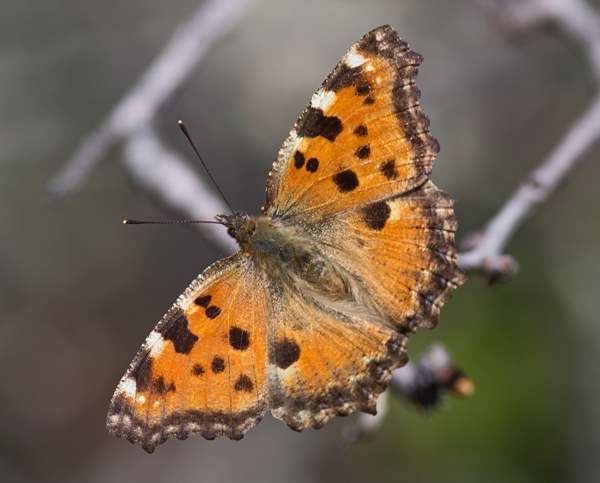
We saw our first Large Tortoiseshell not in Britain, where this is such a rare butterfly (and officially extinct here for about half a century, although a small breeding colony was recorded in Sussex in 2022), but in Bulgaria; unfortunately for us, it was a very busy butterfly on a mission, and never once while in our sight did it pause long enough and close enough for a photograph. The only other place that we have seen the Large Tortoiseshell is in the Algarve region of southern Portugal.
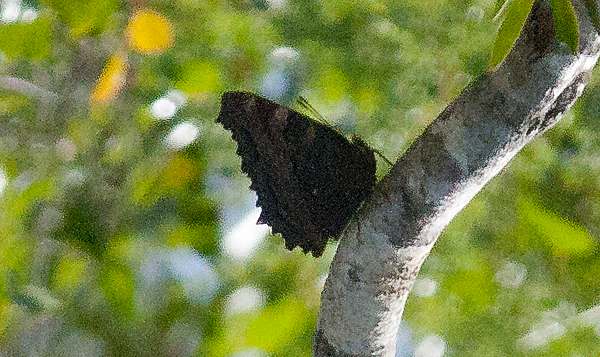
The undersides of the wings are cryptically coloured, as seen above, photographed at long range, again in the Algarve. (Getting close enough to one of these very skittish, fast-flying butterflies to take a good photograph is a real challenge!)
At one time this butterfly was a common occurrence in Britain, and the reason for its disappearance (other than the occasional 'lost' migrant or a release from captivity) is unclear. One obvious change is a dramatic reduction in the number of its preferred larval foodplants, various Elm trees (Ulmus species), due to Dutch elm disease.
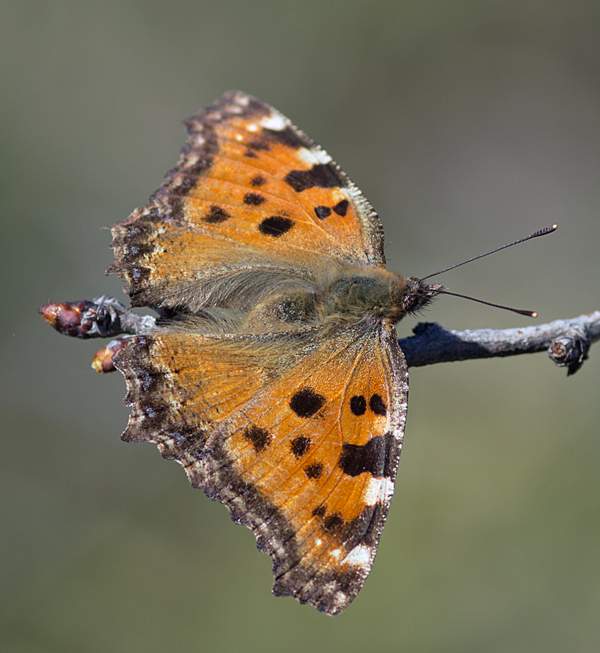
Larger and duller than the Small Tortoiseshell, and lacking the white spot in the corner of the forewing, the Large Tortoiseshell is in fact more closely related to the Camberwell Beauty.
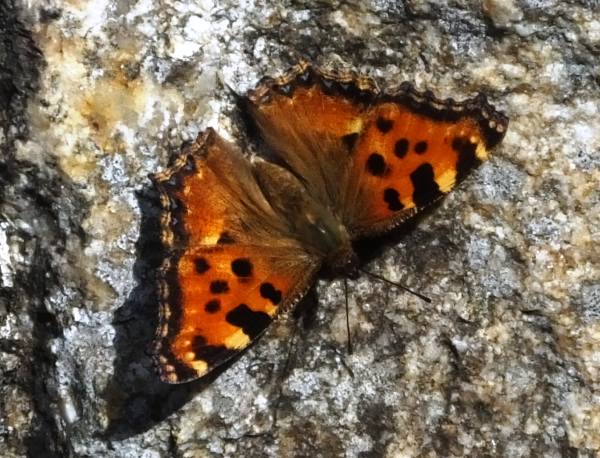
Distribution
In Britain this butterfly is now generally considered extinct as a breeding species, with a handful of migrants reported in 'good' years but none at all most years nowadays.
Breeding populations occur across central and southern mainland Europe and in northern Africa as well as into Asia.
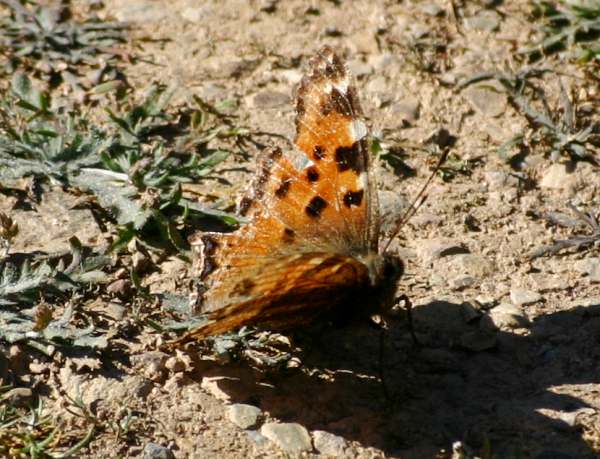
Lifecycle
Overwintering as hibernating adults, the butterflies emerge and mate in spring, laying their eggs on the leaves of Elms (mainly) and occasionally various other trees of the Populus genus - poplars, aspen etc. Very occasionally willows (Salix species) are also used.
Etymology
The genus name Aglais comes from Greek and means 'splendid' or 'shining', while the specific epithet polychloros, given to this species by Carl Linnaeus, literally means ' many green's - perhaps referring to many-coloured leaves (as this is mainly a scrubland and woodland-edge butterfly), although some authorities have suggested that Linnaeus may have intended referring to it as polychromos, meaning 'many colours' (although this seems hardly appropriate either!).
Similar species
The Small tortoiseshell Aglais urticae is still very common in Britain. It is smaller, brighter, and has a distinctive large black patch on the underside of the hind wing.
Acknowledgements
This page includes pictures kindly contributed by Rob Petley-Jones.
Studying butterflies and moths...
Excited at the prospect of flyfishing? So are we, and we're pretty sure you would find the Winding River Mystery trilogy of action-packed thrillers gripping reading too. Dead Drift, Dead Cert, and Dead End are Pat O'Reilly's latest river-and-flyfishing based novels, and now they are available in ebook format. Full details on our website here...
Buy each book for just £4.96 on Amazon...
Please Help Us: If you have found this information interesting and useful, please consider helping to keep First Nature online by making a small donation towards the web hosting and internet costs.
Any donations over and above the essential running costs will help support the conservation work of Plantlife, the Rivers Trust and charitable botanic gardens - as do author royalties and publisher proceeds from books by Pat and Sue.
